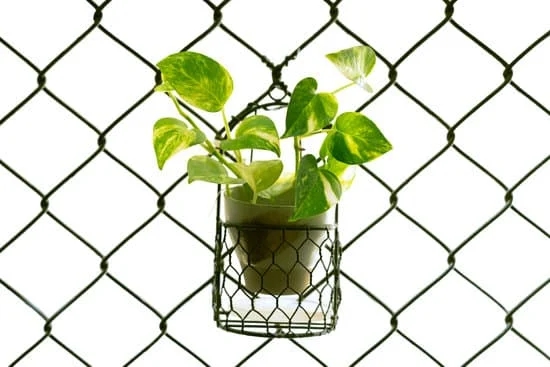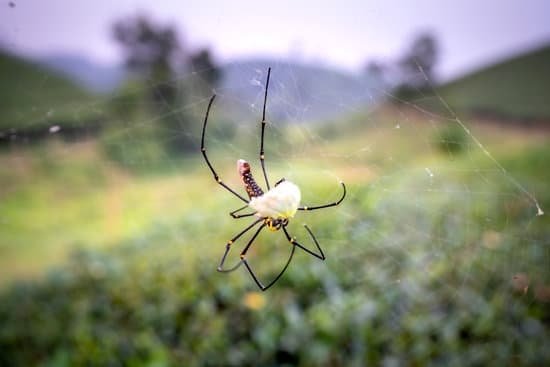When it comes to creating a beautiful and bountiful garden, good vegetable gardening ideas are key to success. Vegetable gardening offers a multitude of benefits beyond just providing fresh produce for your kitchen. From improved physical health through outdoor activity to the satisfaction of growing your own food, there are numerous reasons to start your own vegetable garden.
One of the most important steps in vegetable gardening is selecting the right vegetables to grow in your garden. Whether you’re a beginner looking for easy-to-care-for plants or an experienced gardener ready to take on more challenging varieties, choosing the right vegetables will set the foundation for a successful harvest. Consider factors such as climate, available space, and personal preferences when deciding which vegetables to cultivate.
In addition to choosing the right vegetables, planning your vegetable garden layout is essential for maximizing space and productivity. Whether you opt for traditional row planting or square foot gardening, careful consideration of plant placement can help optimize sunlight exposure and water distribution. With proper planning and attention to detail, you can create a thriving vegetable garden that yields a plentiful harvest throughout the growing season.
Choosing the Right Vegetables for Your Garden
When it comes to choosing the right vegetables for your garden, there are several factors to consider to ensure a successful harvest. First and foremost, take into account your local climate and growing season. Some vegetables thrive in cooler temperatures, while others require warmer conditions to flourish. Research the best vegetables for your specific region to maximize your chances of success.
In addition to climate considerations, think about what vegetables you and your family enjoy eating. There’s no point in growing an abundance of a certain vegetable if no one in your household likes to eat it. Consider the types of dishes you frequently cook and incorporate those vegetables into your garden plan. This will not only ensure that you’re growing produce that will be used, but also make cooking with homegrown ingredients even more rewarding.
To help you get started, here is a list of popular vegetables that are relatively easy to grow and suitable for most beginner gardeners:
- Tomatoes
- Peppers
- Zucchini
- Cucumbers
- Carrots
- Lettuce
- Snap peas
By selecting a variety of these vegetables, you can create a diverse and abundant harvest in your garden. Remember to also consider any space limitations or container gardening options if you have a small yard or limited outdoor space. With good vegetable gardening ideas in mind, you’ll be on your way to enjoying fresh, homegrown produce in no time.
Planning Your Vegetable Garden Layout
When it comes to planning your vegetable garden layout, there are a few key factors to consider in order to maximize space and efficiency. One important aspect is to ensure that your plants have enough space to grow without overcrowding each other. This can help prevent competition for nutrients and sunlight, leading to healthier and more productive plants.
Here are some tips for planning your vegetable garden layout:
- Consider companion planting: Some vegetables grow better when planted next to certain companions, while others do not fare well together. For example, planting carrots near tomatoes can help repel pests that may damage the tomatoes. Research companion planting combinations that work well together to optimize your garden space.
- Utilize vertical gardening techniques: Growing upward instead of outward can save space in your garden while also providing support for vining plants like peas, cucumbers, and beans. Trellises, cages, or stakes can be used to train these plants to grow vertically.
- Rotate crops annually: To maintain healthy soil and prevent disease buildup, it’s essential to rotate your crops each year. This means planting different types of vegetables in different locations within your garden beds from season to season.
Implementing these strategies into your vegetable garden layout can help you make the most of your space and cultivate a bountiful harvest. With proper planning, you can create a thriving garden that provides fresh produce throughout the growing season. Remember, the key is to adapt these ideas based on the size of your garden and the specific vegetables you wish to grow.
Essential Tools and Supplies for a Successful Vegetable Garden
When it comes to starting and maintaining a successful vegetable garden, having the right tools and supplies is crucial. One of the most essential tools for any gardener is a good pair of gardening gloves. These will protect your hands from thorns, rough soil, and potential irritants while you work in the garden. Another important tool is a sturdy hand trowel for transplanting seedlings, digging small holes, and loosening soil.
In addition to tools, investing in quality supplies can make a big difference in the health and productivity of your vegetable garden. A durable garden hose with an adjustable spray nozzle is essential for watering your plants efficiently. Mulch, such as straw or wood chips, can help retain moisture in the soil and suppress weeds. Plant supports like stakes or cages are also necessary for keeping taller plants like tomatoes or peppers upright as they grow.
Furthermore, having a good set of pruning shears on hand can help you trim back overgrown branches or dead foliage to promote healthy growth in your vegetable garden. A watering can is useful for spot-watering delicate seedlings or newly transplanted plants without disturbing the surrounding soil. Additionally, keeping a sharp pair of scissors ready for harvesting vegetables ensures clean cuts that minimize damage to the plant.
| Essential Gardening Tools | Essential Gardening Supplies |
|---|---|
| Gardening gloves | Garden hose |
| Hand trowel | Mulch |
| Pruning shears | Plant supports (stakes or cages) |
Tips for Soil Preparation and Maintenance
Soil preparation and maintenance are crucial aspects of successful vegetable gardening. One key tip for preparing your soil is to conduct a soil test to determine its pH level and nutrient content. This will help you understand if any adjustments need to be made to optimize the soil for vegetable growth. Adding organic matter, such as compost or manure, can improve soil structure and fertility, providing a healthy environment for your plants to thrive.
Another good vegetable gardening idea is to practice crop rotation in your garden. Rotating the location of your vegetable crops each season can help prevent the buildup of pests and diseases in the soil. Additionally, different vegetables have varying nutrient needs, so rotating crops can also help maintain soil fertility by preventing depletion of specific nutrients.
Regular maintenance of your garden’s soil is essential for long-term success. This includes tasks such as weeding, mulching, and monitoring moisture levels. Mulching helps retain moisture in the soil, suppresses weeds, and adds organic matter as it breaks down over time. Regularly checking the moisture levels of your soil and watering accordingly is important to ensure that your plants are receiving adequate hydration for optimal growth.
Overall, taking care of your garden’s soil through proper preparation and maintenance practices plays a significant role in the health and productivity of your vegetable plants. By implementing these good vegetable gardening ideas, you can create a thriving environment for growing delicious homegrown produce right in your backyard.
| Soil Preparation Tips | Benefits |
|---|---|
| Conduct a soil test | Determine pH level and nutrient content |
| Add organic matter | Improve soil structure and fertility |
| Practice crop rotation | Prevent pest buildup and maintain soil fertility |
Watering and Irrigation Techniques for Healthy Plants
Proper Watering Techniques
One of the most important factors in successful vegetable gardening is ensuring that your plants receive adequate water. The frequency and amount of water needed will vary depending on the specific vegetables you are growing, the climate in your area, and the type of soil in your garden.
In general, most vegetables require about 1 inch of water per week, either from rain or irrigation. However, it’s essential to monitor your plants regularly to ensure they are not under or over-watered.
Choosing the Right Irrigation System
There are several options for watering your vegetable garden, including drip irrigation, soaker hoses, sprinklers, and hand watering. Drip irrigation systems are a popular choice for many gardeners because they deliver water directly to the base of plants, reducing waste and minimizing weed growth.
Soaker hoses are another efficient option as they provide a slow, steady stream of water to the roots of your plants. Whichever system you choose, be sure to adjust the frequency and duration of watering based on weather conditions and plant needs.
Saving Water and Conserving Resources
In addition to choosing the right watering techniques, there are other ways you can conserve water in your vegetable garden. Mulching around plants helps retain moisture in the soil and reduce evaporation. Collecting rainwater in barrels or using greywater from household activities can also help offset your need for fresh water from a hose.
By being mindful of your watering practices and implementing conservation strategies, you can promote healthy plant growth while minimizing environmental impact. Implementing good vegetable gardening ideas like efficient watering methods not only benefits your plants but also contributes to a more sustainable approach to gardening overall.
Managing Pests and Diseases in Your Vegetable Garden
Pests and diseases can pose a challenge to even the most experienced vegetable gardeners. However, with the right knowledge and tools, you can effectively manage and prevent these issues in your garden.
Identifying Common Pests and Diseases
One of the first steps in managing pests and diseases is being able to identify them. Common pests in vegetable gardens include aphids, caterpillars, and spider mites, while common diseases include powdery mildew, blight, and root rot. Regular inspection of your plants can help you catch any issues early on before they become a bigger problem.
Natural Pest Control Methods
Instead of resorting to harsh chemicals that can harm beneficial insects and the environment, consider using natural pest control methods in your vegetable garden. For example, introducing beneficial insects like ladybugs and lacewings can help keep pest populations in check. Additionally, planting companion plants that repel pests or attract beneficial insects can also be an effective way to manage pests naturally.
Disease Prevention Strategies
To prevent diseases from taking hold in your vegetable garden, practice good sanitation by removing any diseased plant material promptly. Proper spacing between plants can also improve airflow and reduce the chances of disease spread. Using disease-resistant varieties of vegetables can also help minimize the risk of infection. By implementing these strategies, you can protect your vegetable garden from pests and diseases while promoting a healthy growing environment for your plants.
Harvesting and Preserving Your Homegrown Produce
When it comes to harvesting, timing is key. Vegetables like zucchini and cucumbers should be picked when they are still young and tender for the best taste, while root vegetables like carrots and beets can be left in the ground a bit longer for sweeter flavors. It’s important to research each type of vegetable you’re growing to understand the signs of ripeness and the best methods for harvesting without damaging the plant.
Preserving your harvest can help you enjoy your homegrown produce long after the growing season has ended. Canning, freezing, pickling, and drying are popular methods for preserving vegetables. Canning tomato sauce or pickling cucumbers not only extends their shelf life but also allows you to savor the flavors of summer in the colder months.
Freezing herbs or blanched vegetables can lock in nutrients and freshness for later use in soups, stews, or smoothies. Experimenting with different preservation techniques can help you make the most of your bountiful harvest throughout the year.
In addition to traditional preservation methods, consider creating homemade jams, chutneys, or fermented foods using your homegrown produce. These creative recipes can add variety to your meals and showcase the flavors of your garden-fresh vegetables. By exploring different culinary techniques with your harvest, you can truly appreciate the value of good vegetable gardening ideas beyond just growing plants in your backyard garden.
Creative Ways to Use Your Vegetables in Cooking and Recipes
Growing your own vegetables in a garden can be a rewarding experience, not only because of the satisfaction of watching your plants grow, but also because of the delicious meals you can create with your homegrown produce. There are plenty of creative ways to use your vegetables in cooking and recipes that can elevate your dishes to a whole new level.
From simple salads to gourmet dishes, the possibilities are endless when it comes to incorporating your fresh vegetables into your meals.
One good vegetable gardening idea is to experiment with different cooking techniques to highlight the flavors and textures of your vegetables. Roasting vegetables like carrots, peppers, and zucchini can bring out their natural sweetness and add a caramelized depth of flavor to your dishes.
Grilling vegetables such as eggplant, corn, and asparagus can impart a smoky charred taste that pairs well with meats or on its own as a side dish. Stir-frying mixed vegetables with a flavorful sauce can create a quick and tasty meal that is full of color and nutrients.
Another great way to use your garden harvest is by preserving them for later use. Canning tomatoes for homemade pasta sauce, pickling cucumbers for crunchy snacks, or freezing excess herbs for soups and stews are all wonderful ways to extend the life of your vegetables and enjoy them throughout the year.
By learning how to properly preserve and store your homegrown produce, you can continue to savor the flavors of your garden long after the growing season has ended. Experimenting with different preservation methods can also lead to new culinary creations that you may not have tried before.
Conclusion
In conclusion, vegetable gardening provides a multitude of benefits beyond just a fresh supply of produce. It offers a sense of satisfaction and accomplishment as you nurture plants from seed to harvest. The act of growing your own food also fosters a deeper connection to nature and the earth, promoting sustainable living practices.
Implementing good vegetable gardening ideas not only results in bountiful harvests but also contributes to a healthier lifestyle. By knowing exactly where your food comes from and how it was grown, you can ensure that you are consuming nutritious and chemical-free produce. Additionally, gardening can be a therapeutic and stress-relieving activity that allows you to unwind and reconnect with the rhythms of the natural world.
As you embark on your vegetable gardening journey, remember that success often lies in patience, diligence, and experimentation. Every garden is unique, so don’t be afraid to try new things and learn from both successes and failures along the way. Whether you have acres of land or just a few pots on a balcony, the joys of growing your own food are accessible to everyone willing to put in the time and effort. Happy gardening.
Frequently Asked Questions
What Is a Good Layout for a Vegetable Garden?
A good layout for a vegetable garden includes ample sunlight, proper spacing between plants, easy access for watering and harvesting, and consideration of companion planting. Raised beds or rows can help organize the garden effectively.
What Are the 10 Easiest Vegetables to Grow?
Some of the 10 easiest vegetables to grow include tomatoes, zucchini, lettuce, radishes, green beans, carrots, cucumbers, bell peppers, spinach, and herbs like basil or mint. These plants generally require minimal care and are great for beginners.
What Is the Most Suitable for Vegetable Gardening?
The most suitable for vegetable gardening depends on your climate and soil conditions. However, some popular options are tomatoes, peppers, zucchinis, lettuce, and herbs like basil or parsley. These plants tend to be versatile and relatively easy to grow in most settings.

Welcome to my gardening blog! I am passionate about plants and enjoy sharing my knowledge and experiences with others. In this blog, I will write about everything related to gardening, from tips on how to get started to updates on my own garden projects.





